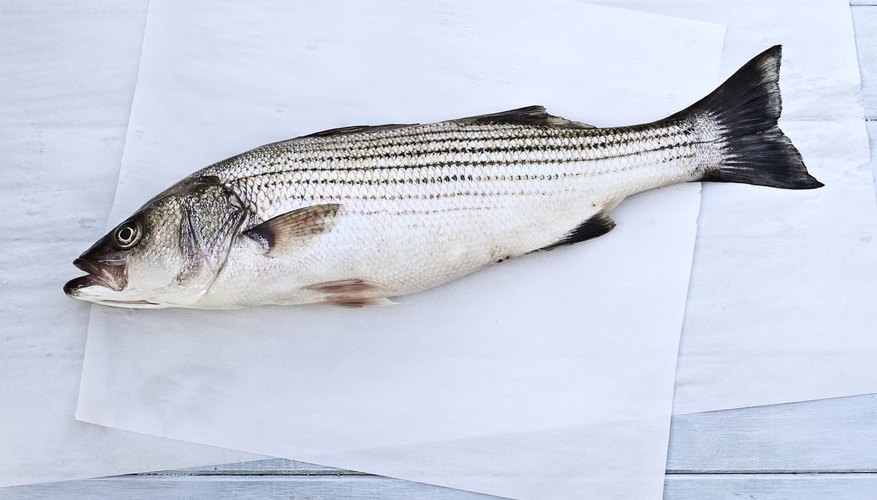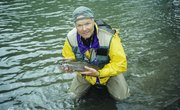
Striped bass are among the most popular and sought-after of game fish. Growing up to 3 feet and weighing up to 100 pounds, these large, aggressive fish can be found in fresh and saltwater. Knowing their behavior, the bait they will take and the gear required for catching striped bass will make your next fishing trip more rewarding.
Rod and Reel
For striped bass fishing, choose a medium- to heavy-action rod. Use rods that have reinforced guides to handle the heavier test lines required for striper fishing. For boat fishing or shore fishing, use a rod between 5 and 8 feet long. For surf fishing, rods 9 to 12 feet long are best because they allow for longer casts. Also, choose a heavy-duty spinning reel or bait casting reel when fishing for stripers.
The Bait
Natural bait is usually the best bait for stripers. Try dead menhaden, herring or eels. Striped bass will also take sandworms, blood worms and clams. Artificial lures, such as spoons, yellow or white bucktail jigs, and deep running spinners or crank baits can also be used. Try popper lures for surface fishing for schooling stripers.
The Right Rig
Striped bass are big fish, often exceeding 3 feet in length. They are also hard fighters. This requires fairly heavy-duty tackle to handle these bruisers. An average main line weight of 20 lb. test tied to a large barrel swivel with a 50 lb. test monofilament leader and the number six to number nine hook is an effective rig for striper fishing.
Changes in the Weather
While clear, sunny weather is perfect for a fishing trip, it tends to dampen the appetites of striped bass. Lower barometric pressures, with subsequent cloudy and sometimes rainy weather, encourages stripers to feed, making it the best time to catch a fish. Watch for that oncoming storm to plan your next trip.
Look for Bait Fish
Watch the surface of the water or use a fish finder to locate schools of bait fish in areas where stripers are known to run. Schools of striped bass often shadow bait fish, herding, then surrounding the fish for their feeding attack. If you spot this behavior, wait for the stripers to start feeding and cast your bait into the frenzy.
Practice Patience
A common practice of striped bass is to slap prey fish with their tails to stun them, then come back around to take the prize. If this happens to your bait, it might seem as though you have a strike. Be patient and allow the fish to circle or another fish to attack and eat your bait before trying to set the hook.
Be Prepared for a Fight
Stripers like to run when hooked and they will often make multiple runs. These fish can easily strip 50 yards of line, so make sure your drag is not set too tight or your line will break. Wait for the fish to finish running before trying to reel it in.
Fish at Night
Striped bass have an extremely good sense of smell and excellent night vision, making them effective night predators. In many areas, stripers tend to be more active at night. A clear moonlit night is an excellent time to fish for striped bass.
References
Writer Bio
In Jacksonville, Fla., Frank Whittemore is a content strategist with over a decade of experience as a hospital corpsman in the U.S. Navy and a licensed paramedic. He has over 15 years experience writing for several Fortune 500 companies. Whittemore writes on topics in medicine, nature, science, technology, the arts, cuisine, travel and sports.



